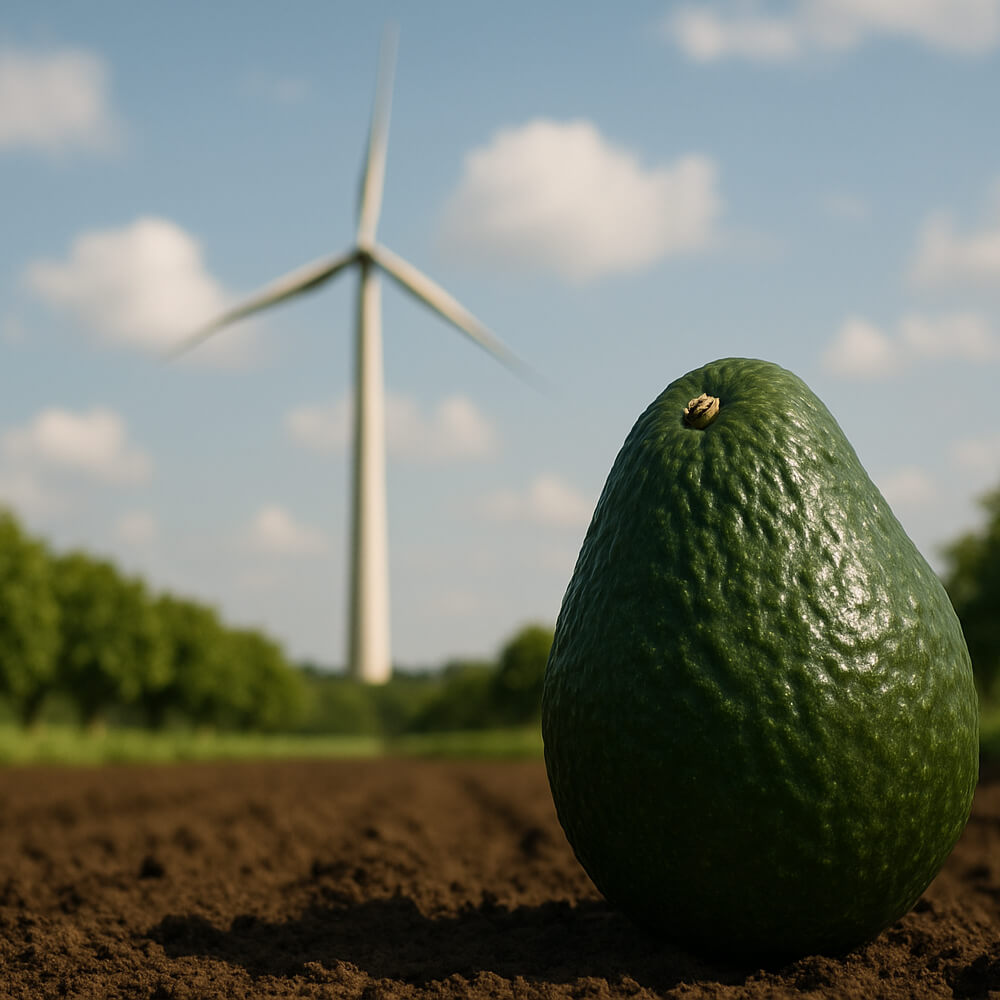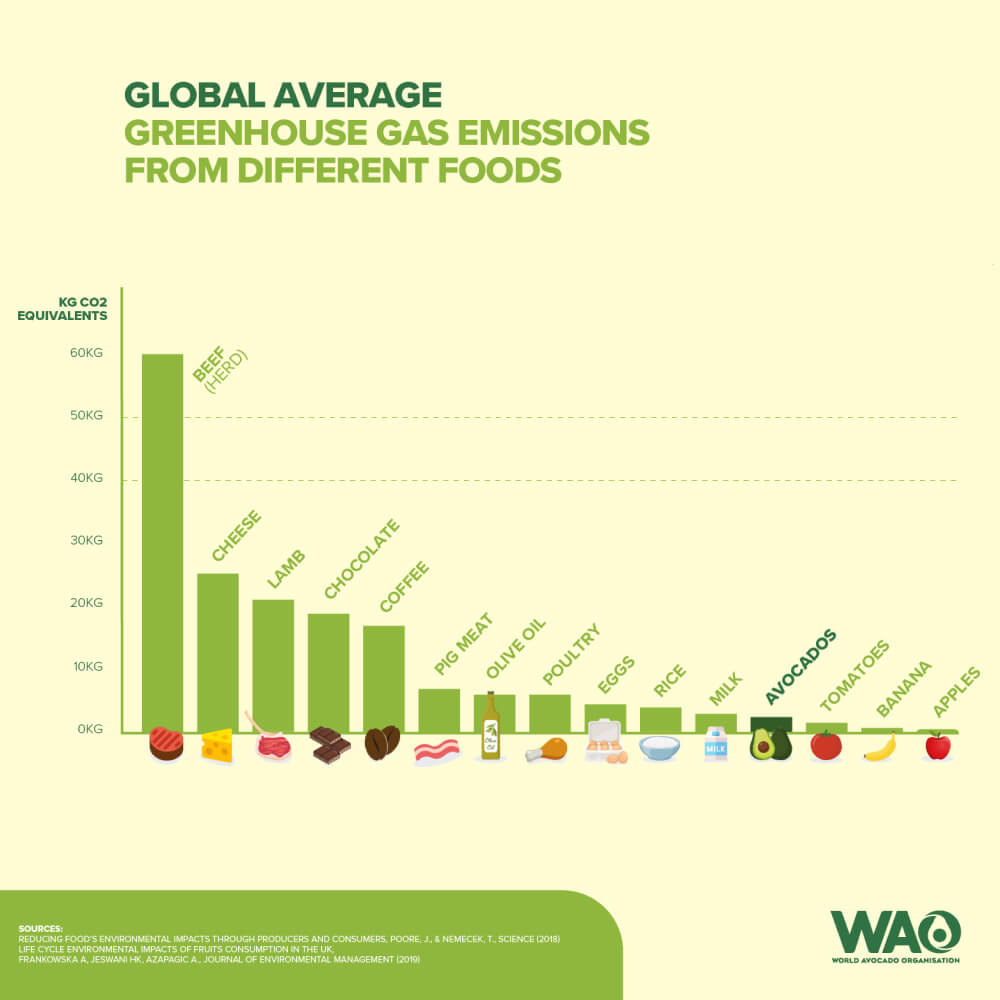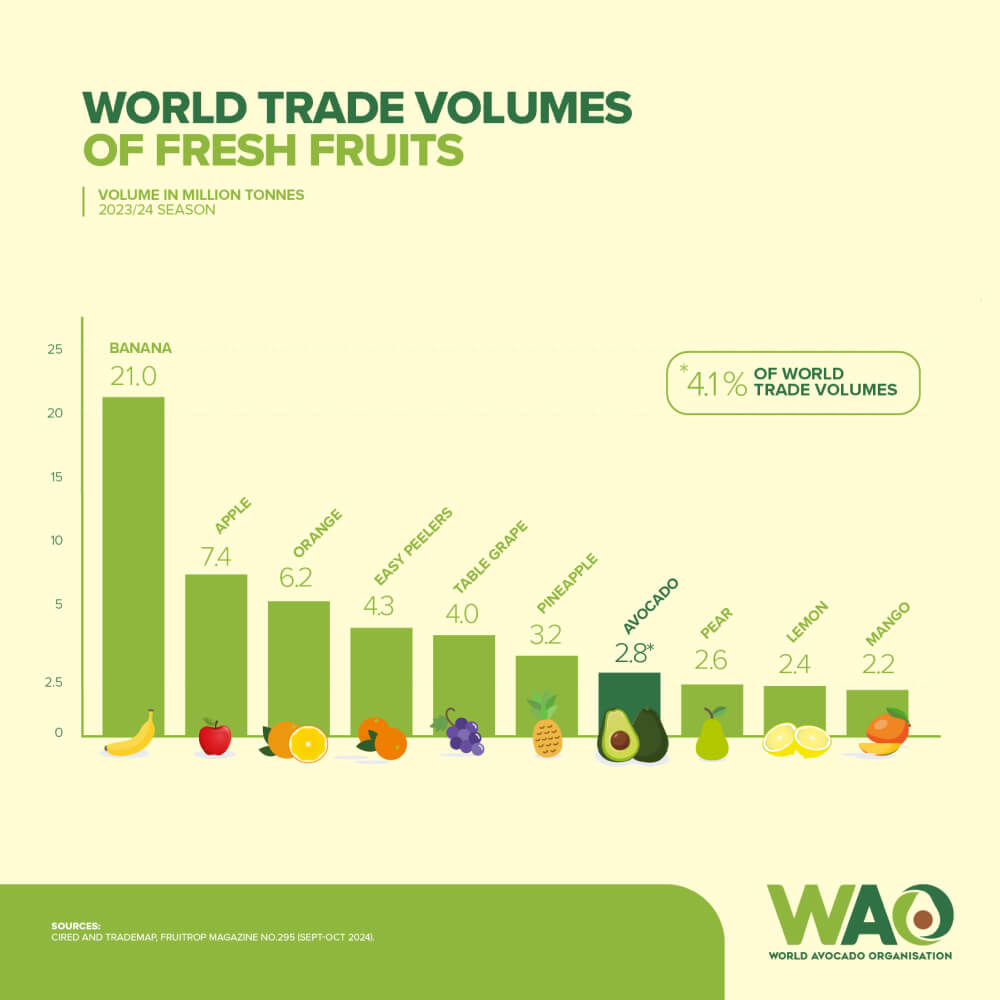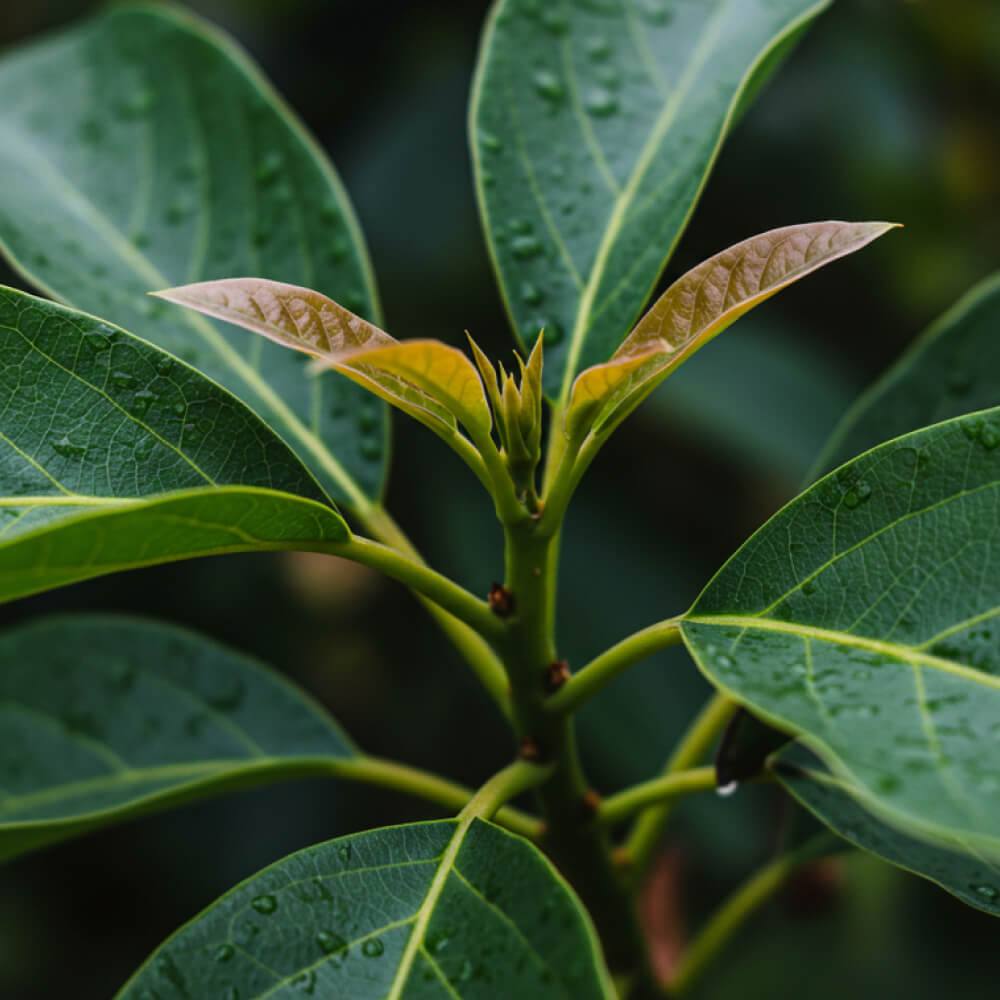Carbon Footprint
Avocados have a much lower carbon footprint than animal-based food


Myth: ‘Avocados are transported by plane.’
Wrong. Almost all avocados consumed in Europe are transported by ship from Latin America and Africa, not by plane. Sea freight emits far less greenhouse gases than other transport – emissions are 25 times lower than vehicle transportation and a whopping 145 times lower than air freight.
As a whole, sea transport accounts for a very small portion of global CO2 emissions.
There has been significant progress in reducing emissions further. The International Maritime Organisation has set a target to cut emissions by 50% by the year 2050 with innovations such as harnessing wind and solar power and building ships with more energy-efficient materials.
In recent years, avocado storage efficiency has been optimised with new packing boxes that allow for 21,120 kg per container, compared to bananas which can fit just 16,320 kg per container.
Smaller Than You Think
Referring to the total amount of greenhouse gases generated during the lifecycle of a product, the carbon footprint of avocados is around 25 times less than that of beef, 10 times less than lamb or cheese, 7 times less than coffee, and comparable to that of other fruits.
.webp)
A UK-based study in the Journal of Environmental Management found that avocados produce 2.4kg CO2 equivalents per kg in their production process – roughly equal to plums and strawberries, and less than raspberries and mangoes.



Did You Know?
Taking a wider view, avocados currently only make up 0.031% of total world trade, a small fraction of global agricultural production.

And avocado crops only represent 4 to 5 % of global production of vegetables and fruit so their environmental footprint is limited.

Smaller Than You Think
Referring to the total amount of greenhouse gases generated during the lifecycle of a product, the carbon footprint of avocados is around 25 times less than that of beef, 10 times less than lamb or cheese, 7 times less than coffee, and comparable to that of other fruits. After the avocado seeds are planted, it typically takes a few weeks for them to germinate.
A UK-based study in the Journal of Environmental Management found that avocados produce 2.4kg CO2 equivalents per kg in their production process – roughly equal to plums and strawberries, and less than raspberries and mangoes.

Did You Know?
Taking a wider view, avocados currently only make up 0.031% of total world trade, a small fraction of global agricultural production.
And avocado crops only represent 4 to 5 % of global production of vegetables and fruit so their environmental footprint is limited.

Avocado trees capture carbon
Like nearly all commercially grown crops, avocados have come under scrutiny for being grown as a monoculture. However, unlike many crops which must be replanted each year (such as soybeans or maize), avocados grow on trees that are perennial.
These trees can live for up to 70 years or even longer, absorbing carbon dioxide and converting it to oxygen at a steady and consistent rate. They also continue to produce fruit season after season.
Compared to annual crops, perennial tree crops are better for the environment as there is reduced soil erosion and increased carbon capture. Perennial trees remain on earth for several years across their lifespan, allowing them to grow to maturity and absorb carbon dioxide consistently. A mature avocado tree can absorb carbon dioxide at a rate of almost 22 kg per year, according to research from the University of Florida.

Avocado trees capture carbon
Like nearly all commercially grown crops, avocados have come under scrutiny for being grown as a monoculture.
However, unlike many crops which must be replanted each year (such as soybeans or maize), avocados grow on trees that are perennial.
.webp)
These trees can live for up to 70 years or even longer, absorbing carbon dioxide and converting it to oxygen at a steady and consistent rate.
They also continue to produce fruit season after season.
.webp)
Compared to annual crops, perennial tree crops are better for the environment as there is reduced soil erosion and increased carbon capture.
Perennial trees remain on earth for several years across their lifespan, allowing them to grow to maturity and absorb carbon dioxide consistently.
.webp)
A mature avocado tree can absorb carbon dioxide at a rate of almost 22 kg per year, according to research from the University of Florida.
.webp)
